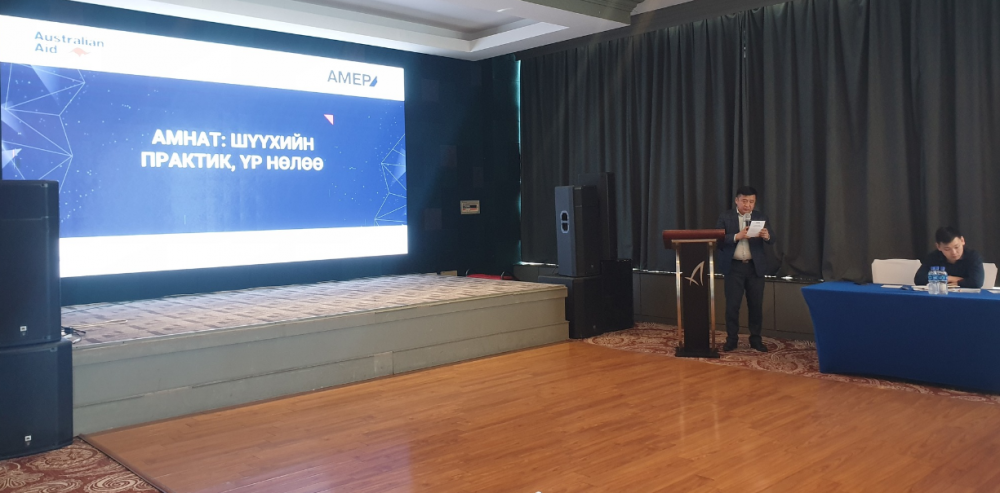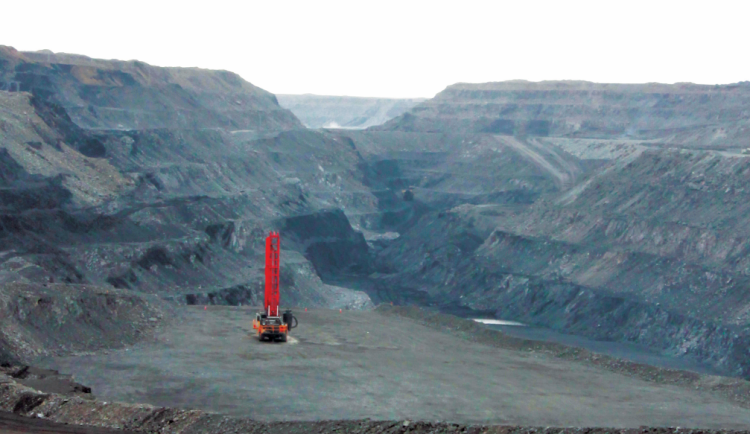misheel@mininginsight.mn
Mining Insight Magazine, April 2023
During an open discussion organized by AMEP2 on April 5, 2023, regarding the appropriate mineral resources royalty rates in the context of mineral revision, participants expressed various opinions. Below is a summary of the opinions shared during the discussion.
Geologist Bat-Erdene.D, a member of the Board of Directors of the Mongolian Association of Industrial Geologists: Since the Border Law of Mongolia states that you cannot approach the border strip for 15 km, you cannot conduct a search, mapping, and research. The provision of opportunities for geological exploration in the border area should be included in the law. One issue is that the byproducts in molybdenum mines are being taxed. This problem is not limited to molybdenum mines; Oyutolgoi and Erdenet are also affected. The calculations are made for elements that are valuable in geological and exploration processes, which are used to determine the reserves. However, all chemical elements are also taken into account. Unfortunately, it appears that the tax authorities lack an understanding of this and apply taxes to all elements. Another issue is that the extraction of GHG results in the release of naturally occurring uranium and thorium, which creates a legal barrier under the Law on Nuclear Energy. This issue extends beyond GHG to other minerals; for example, lithium extraction also involves uranium. Additionally, some fluorspar deposits contain radioactive materials. Clear regulations must be established to prevent these issues from causing problems in the mining industry. As our country plans to begin uranium mining in the next few years, it is important to consider how to calculate royalties for uranium. Australia has uranium deposits, and studying their experience may help us avoid future problems with royalties for uranium.
Altankhuyag.D, Chief Geologist of Erdenet Mining Corporation SOE: The amount of royalties collected from aluminum, tin, lead, and zinc produced by the Erdenet Mining Corporation is considered excessive. During discussions, it was proposed to determine the royalties from secondary elements of economic importance. The criteria for determining such elements could be regulated by government decree, which is already in place. The state mining administrative organization's proposal should not be the sole basis for such regulations. Although the Ministry of Finance is powerful, it is unlikely that the taxation of ancillary elements will be removed. Therefore, it would be beneficial to clarify the taxation of these elements in the law. Economic efficiency cannot solely rely on feasibility studies. On the other hand, the AMEP project has researched royalties and reported its findings. Have the results of that report been taken into account in the current bill? Given the numerous projects that have been implemented, it would be beneficial to compare and incorporate the findings into the decision-making process.
Dr. Tseveenjav.J, professor at the National University of Science and Technology: Should we explore the option of taxing royalties? The constitution asserts that subsoil resources are common property, and the public demands a fair share of the revenue. Why not distribute the income generated by sales via a Wealth Fund? By studying foreign models, Mongolians can improve their approach to royalties.
Enkhdolgor.G, a lawyer at "Oyutolgoi" LLC How can we determine that royalties will be charged for secondary elements of economic importance? Can we use economic significance as a criterion? As royalties are charged for resource usage, "utilization" should be the key factor. Fees for resource usage are paid out of revenue generated, implying that income has been generated in some way. Thus, "revenue" could be used as a criterion. It is unreasonable to determine the content and characteristics of exported minerals based solely on the opinion of a customs inspector. Instead, laboratory analysis should be the basis for determining the characteristics of the minerals. It is important to specify that the laboratory used should be accredited either by Mongolian or international standards, rather than solely relying on the conclusion of the customs inspector.
Zoljargal.J, Executive Director of Mongolian Coal Association: Coal companies are currently supporting the implementation of royalties by maintaining domestic exchange prices, providing at least a benchmark for pricing. However, unlike gold, there is no standardized coal product. Coal prices can vary greatly, with some selling for as high as USD 200 and others for as low as USD 20, depending on the quality and source of the coal. This variation makes it difficult to determine which coal should be used as the basis for the average exchange price of the previous month. If coal is connected to the exchange, it should be categorized according to quality. The easiest solution would be to base royalties on contract prices, but it remains uncertain whether this would be accepted.
Executive Director of the Mongolian Association of Industrial Geologists, Mungunshagai.Ts: The table that calculates the incremental royalties based on the base valuation shows that royalties will typically pay a tax rate of 7-8 percent at the London Stock Exchange price. However, it is unclear what research was used to introduce the moving price into the law and create a hierarchy. Our neighboring countries use the same assessment-based system as ours, but countries like Chile and Peru have a profitbased system, which could improve competitiveness and attract investment. Therefore, it is worth considering whether a profit-based system would be more beneficial for Mongolia. With the increase in raw material prices for coal and gypsum, the cost of processing and use is also increasing. Therefore, if the government rigidly regulates rather than being flexible, it could create more problems. I suggest focusing on specific issues such as royalties when discussing revisions to the Law on Minerals. During last year's Mongolian Geology and Exploration Conference, although there were discussions, there was no proposal to incorporate royalties into the draft law. This might be because the discussions did not focus on specific issues such as royalties.
Tsevegmid.S, Executive Director of the Union of Fluorspar Extractors, Producers, and Exporters: The provision stating that the license will be revoked if royalties are not paid on time should be removed from the bill. Such matters are already regulated by tax laws.
Purevdorj.D, CEO of "Innova Mineral" LLC: The bill states that minerals not sold on the Mongolian Stock Exchange will be calculated based on the average price of the international market. However, there is a question of how to determine the international market price. For example, China holds 60 percent of the world market for critical minerals. Would the price be determined by going through the Chinese Stock Exchange? What about the prices in the American and European markets? Furthermore, products sold on the Mongolian exchange and those not sold on the exchange are not equal, so how would the average price be calculated? Another suggestion is to have a separate concentrator for exempted mines. Could we consider removing VAT from the concentrator and exempting it from royalties? These are important issues that need to be addressed in the bill.
Buyanbadrach.M, CEO of the Mongolian Heavy Industry Mineral Association: Recently, the Prime Minister encouraged constructive criticism before the law is approved, and stated that he will consider and accept suggestions, including the three from our association. Double taxation and taxing unearned income may deter foreign investors from coming to Mongolia. Our association is strongly opposed to royalties, which are imposed on the unearned income of processing plants without mining licenses. In 2019, the law was changed, and royalties were imposed on refineries according to international standards, resulting in the bankruptcy of over 30 factories and the loss of 5-6 thousand jobs. Despite the President, Prime Minister, and Minister of Industry addressing this issue at all levels, it remains unresolved, causing investments to depreciate and deterring further investments. Regrettably, the bill does not provide clear regulations to support the manufacturing industry, which we strongly support.
"Monpolymet" Group Head of Geology and Mining Department Erhembayar.T: Gypsum is an essential mineral used in the cement industry, alongside limestone and clay. It is proposed to exclude gypsum from being classified as a mineral. Alternatively, a tiered pricing system could be considered, where minerals with a price range of USD 10-11 are taxed at 6 percent, minerals priced between 12-13 at 7 percent, and those priced at 18 or more at 10 percent. However, this estimate was made many years ago when mining costs at the mouth of the mine were around 30-35 percent, and gypsum sold for USD 60 plus shipping, which was based on actual costs and not profit. In recent years, fuel prices have increased, and the criteria for the cement industry have changed, leading to an increase in costs. Therefore, a tiered pricing system of at least USD 50-60 may be more feasible. It is challenging for construction companies to pay 10 percent of their income as royalties, given the difficulties and costs associated with gypsum mining and processing.
Mining Insight Magazine, April 2023




















